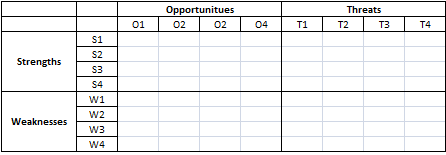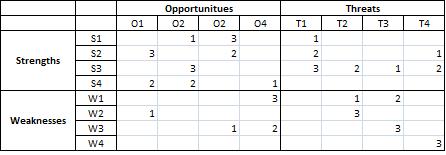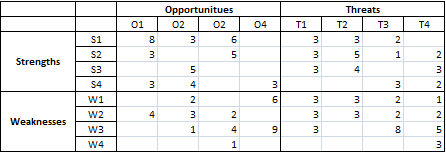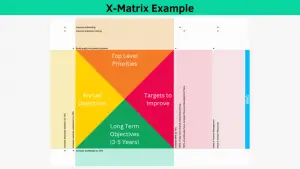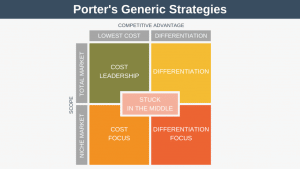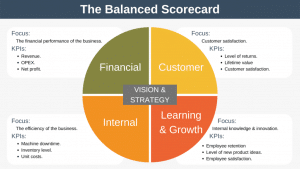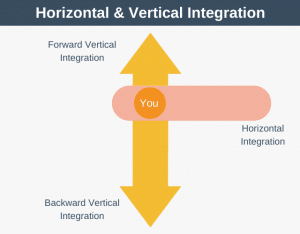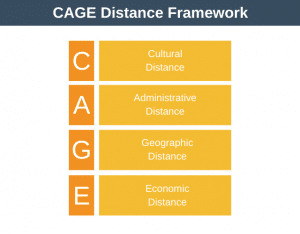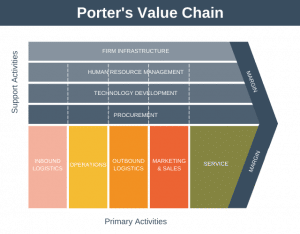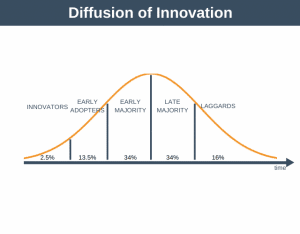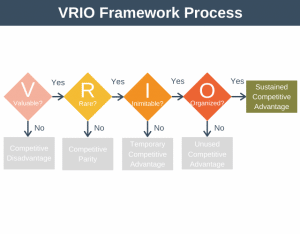A Confrontation Matrix is a tool which is used to further analyse the output of a SWOT analysis. It allows you to analyse each different combination of strength, weakness, opportunity, and threat. By doing this the aim is to identify the most important strategic issues the organization is facing. This article will walk you through the process of completing an confrontation analysis. An example of an empty confrontation matrix is shown below.
One simple mechanism to complete the confrontation matrix is as follows:
- Move across the matrix from left to right, starting with opportunity 1 (O1).
- Look at the different internal options (strengths and weaknesses) and assign a score of 3 to the best one, a score of 2 to the next best option, and a score of 1 to the next best option. All other options receive a score of 0.
- Continue working left to right across the matrix until you have completed the column for the final threat.
Many people use + and – symbols when completing their matrix, but I find the scoring scheme above works well for me. Using the scheme described above, a completed matrix will look something like this.
From this, the next step is to investigate all of the combinations you have identified as strategically important or interesting, continually narrowing your options down until you have settled upon the best strategy for your organization.
In reality, however, strategy is never decided in isolation, and you will probably need to complete the confrontation matrix as part of a group. The easiest way to do this to allow everyone to assign their own points as they deem fit, so for example, in a group of 3 people you would have 18 points to distribute per column (3*3 + 3*2 + 3*1 = 18 points). This allows everyone to provide their input without a huge debate, and results in a matrix which looks something like the following:
The higher the score in a particular cell the more attention and debate must be given to that option. In our first example above, when we completed the confrontation matrix alone, the matrix informed us we should consider O1-S2 as an important O1 column option, however, after working as a team it is telling us we should concentate on O1-S1.
In a broad sense, the options can be classified as follows:
- SO: are options that combine strengths and opportunities. This is the idea mix, allowing the company to do what it is good at when the opportunity arrives.
- WT: are options that combine a company’s weaknesses with external threats. These are also easy – a company should avoid doing business in areas where not only are there large external threats, but it doesn’t have the competencies to compete.
- WO: here a company is trying to seize an opportunity without having the competency. Obviously this is going to be risky. Options to get the competencies include buying them, or developing them internally, although this will take time.
- ST: are options the bring to bear the companys strengths on threats to tuen them into opportunities. Classic examples of this type of strategy include multiple channel promotions and price wars.
When investigating any potential option in detail, scenario planning can help you to try to understand the different ways in which the option might pan out.
Summary
A confrontation matrix can help you to objectively work through all the different options generated from performing a SWOT analysis. We do this to generate the best strategy for our organization. One advantage of the confrontation matrix is that it allows a group of people to collectively decide which options are important, ensuring that everyone’s opinion is represented and that interesting options are less likely to be overlooked.
